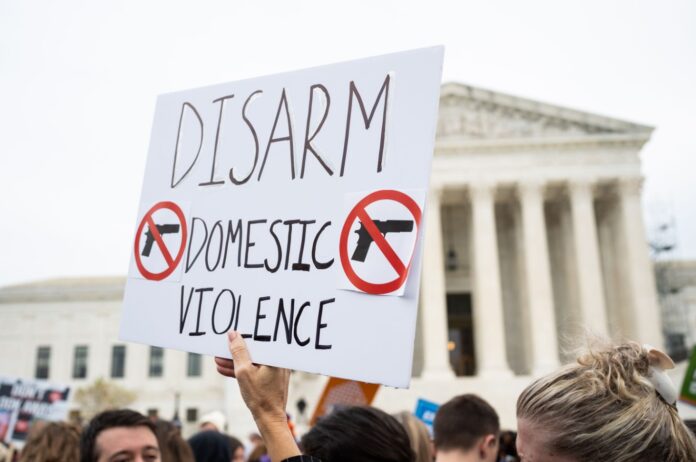The Supreme Court’s docket featured a critical case this Tuesday, United States v. Rahimi, putting the spotlight on the precarious balance between gun rights and protections for survivors of domestic violence. The case has everyone on edge, and the oral arguments suggest the justices might side with maintaining a key protective measure in place for nearly three decades. This federal law prevents those under domestic violence restraining orders from gun possession, and its survival seems likely. Yet, the road to this possible outcome is tangled in legal complexities and a history that often ignored survivors’ rights.
Let’s peel back the layers: Zackey Rahimi, whose life story unfolds like a tragic American dream turned nightmare, found himself at the center of this legal storm due to a history of domestic violence. A protective order against him meant he shouldn’t have had access to firearms, yet his arsenal and subsequent violent actions led to a six-year sentence. But then, a legal pivot occurred when last year’s Supreme Court ruling in New York State Rifle & Pistol Association Inc. v. Bruen cracked the door for Rahimi to argue that his Second Amendment rights were being unjustly stripped away.
This case catapults us into the heart of a contentious issue – how to reconcile the Second Amendment with the undeniable threat that firearms pose when in the hands of domestic abusers. With the FBI citing over 78,000 instances where the law effectively kept guns away from domestic violence situations, the impact of this policy is not just numbers on a page; it’s lives saved, and tragedies averted.
Yet, what unfolded in the courtroom was a disconcerting dance around the concept of “dangerousness.” Justice Alito pondered scenarios where the lines of threat aren’t so clear-cut, while Chief Justice Roberts questioned how broadly we define those deemed too dangerous to bear arms. What about those who lose their temper at a sports event? Where do we draw the line?
The real heartbreak, though, lies in the potential fallout of this case. If the Supreme Court turns the dial back on this law, we’re not just talking about a legal setback; we’re staring down the barrel of a dire threat to the safety of survivors across the nation. For many, a gun in the household of an abuser isn’t just a worst-case scenario; it’s a daily, looming terror that could erupt in an instant.
Survivor advocates are sounding the alarm, as calls involving firearms have spiked after the Fifth Circuit decision. We’re reminded that gun violence in domestic situations is a pervasive, insidious epidemic that disproportionately impacts women of color, pregnant, queer, or disabled individuals. The statistics are chilling: firearms exponentially increase the likelihood of a deadly outcome in domestic disputes, and they’re a common thread in mass shootings.
The Supreme Court’s decision on Rahimi could be a watershed moment. It’s about more than legal precedents or the founding fathers’ intentions; it’s about acknowledging the lived experiences of survivors and recognizing the modern-day tools of terror that guns have become in abusive relationships.
As we await the ruling, let’s be clear: this isn’t a mere constitutional debate. It’s a matter of life and death, a test of our society’s willingness to protect those at their most vulnerable. The Supreme Court must heed the urgent call to uphold a survivor’s right to safety over an abuser’s access to guns. The stakes couldn’t be higher, and the nation is watching.



